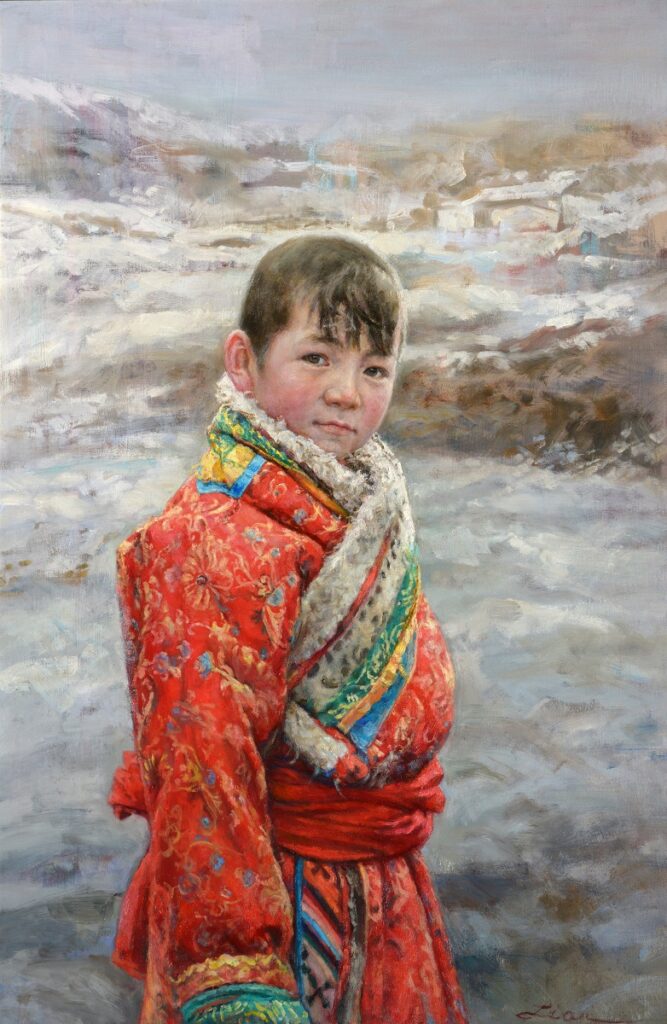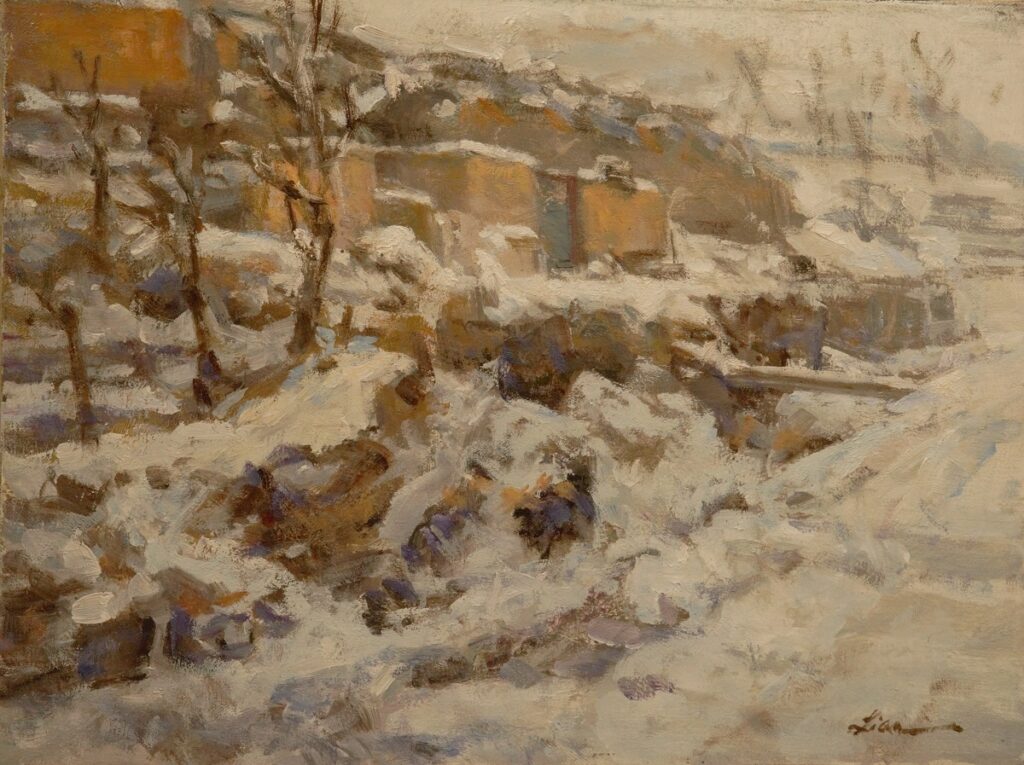Classical, impressionist, and hyperrealist works are all now considered “traditional” painting. I am a member of this field who has been working tirelessly and persistently to hone my passion, which is somewhat of an inheritance from my father. I never stop painting because I want to create the perfect artwork. Although the process is mixed with distress and excitement, frustration and happiness, I never grow tired of it.

(I wished to express a sense of calm and peacefulness while highlighting interests in the hair, skin tone and scarf.)
The standards for what is considered a “good painting” can incorporate many diverse styles and concepts. And while I appreciate various styles, in terms of personal pursuit, I prefer works which are subtle and concise, yet vivid and insightful, hiding their ingenuity and skill in simplicity. The “hidden edge” in East Asian aesthetics is something that I greatly appreciate. For example, in calligraphy and painting, in order to make the work more meaningful, the edge of the brush stokes will be intentionally reduced, so all the lines and colors express the artistic conception of the work with grace and restraint.

(My goal was to reflect the child’s demeanor under the simple contrast of colors.)
Classical religious painting is a perfect example of this philosophy. I believe it was less influenced by the commercial market and instead created by the artists to show their faith and reverence, thus the sense of meaning and authenticity are more strongly reflected in those works. I have always viewed such masterpieces with admiration, trying to learn from them, and comprehend their true meaning.

(I seized the moment to express the youthful vigor of the girl using loose brushstrokes.)
It is undeniable that artists do not live in a vacuum and need financial support. Often, we consciously or unconsciously meet the needs of various markets by bringing commercial influences into our paintings, such as the over-emphasis of bold and exaggerated brush strokes, tones, over-thickened pigment stacks, and over-enhanced color, light, and other surface effects, which I believe weaken the artistry of the work. I have personally experienced painting such works to please the market for the sake of livelihood 25 years ago.

(I strove to emphasize three-dimensionality and a sense of light.)
Over my many years of teaching and judging art, I not only pay attention to the basic elements of the painting, such as space, perspective, color, composition and overall processing, but also to the style level of the work. The style level reflects a person’s understanding and attitude towards art. Understanding and self-cultivation are not only shown by skills, but by the combination of style and technique which creates classic and timeless works.

(I reduced the contrast between cool and warm colors, added rough and seemingly random brushstrokes, and emphasized the sense of heaviness.)
The best ways to improve one’s self-cultivation are to be more optimistic and open-minded about learning from classic works, to visit major art museums where the best “teachers” are often found, and to never stop striving to see and understand more.